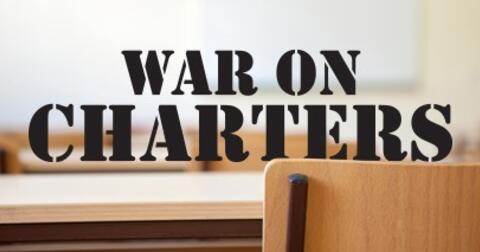New York Times Article, Critical of Charter Schools, Misses Key Point on School Funding
Despite media claims, districts in poor communities get more funding, not less
The New York Times Magazine ran an article critical of charter schools and mischaracterized school finances in Michigan. The article repeated a myth that districts serving poor communities are not funded as well as those in more affluent ones. The author, Mark Binelli, didn’t appear to completely grasp how complex school funding is in Michigan.
For example, he wrote that Highland Park’s public school district was harmed by the city of Highland Park’s financial woes.
Binelli wrote: “A major victim of the city’s borderline insolvency was its public-school system, which had been under state control since 2012.”
That’s not accurate. In fact, it’s wildly inaccurate. Michigan’s funding of public schools has nothing to do with the finances of the cities in which they are located.
Highland Park City School was one of the best-funded schools in the state in the last two years the Michigan Department of Education tracked its funding in 2010-11 and 2011-12.
According to the Michigan Department of Education, Highland Park City Schools’ general fund received $13,900 per pupil in local, state and federal revenues in 2010-11. The state average was $9,204 that year.
In 2011-12, Highland Park City Schools received $15,795 per pupil in local, state and federal funds for its general fund. The state average that year was $9,122.
Binelli appears to look just at a funding bucket called the “state foundation allowance” for his analysis of school funding. The foundation allowance is a complicated mix of local and state funding. But schools receive much more in state dollars than that.
The new Detroit Public Schools Community School District, for example, received $7,552 per pupil in 2017-18 for its foundation allowance. But it also received another $22.8 million from the state for students deemed to be at risk due to family income. As a result, the district received an extra $505 per pupil, which a district with a more affluent population does not receive.
Binelli also repeated the myth that poor communities in Michigan have poorly funded school districts. In fact, the opposite is true.
Binelli wrote: “In theory, poorer districts with lower property-tax bases would ultimately benefit, but per-pupil spending increases, bound to the economy of a state facing its own fiscal challenges, were lagging and inconsistent, and the gap between rich and poor districts never closed.”
That statement is only accurate if the foundation allowance is the only funding source taken into account.
If all funding is reviewed, poorer districts do much better than those in more affluent suburbs, in part because federal funding favors poorer communities.
For example, Detroit Public Schools received $14,708 per pupil for its general fund. The breakdown was $2,223 (local), $9,031 (state) and $2,972 (federal). The total was $5,047 above the state average in 2015-16, the most recent year for which data is available from the Michigan Department of Education.
Detroit’s $2,972 in federal funding for each student was much higher than the state average of $491.
A similar story plays out for just about all urban school districts.
The cities of Benton Harbor and St. Joseph are often juxtaposed in the media because they are neighboring cities with vast differences in community wealth. Benton Harbor’s population had a median household income of $18,805 from 2011-15 while the median household income in St. Joseph was $57,037.
Yet, Benton Harbor Area Schools received $13,784 per pupil in local, state and federal funding while St. Joseph Public Schools received $8,765 per pupil, or about 57 percent less than Benton Harbor’s district.
Freelance writer Mark Binelli and New York Times Magazine editor Jake Silverstein did not return emails asking them for comment.
Editor’s note: This is the second story in a Michigan Capitol Confidential series pointing out the inaccuracies and false claims in this deeply-flawed article.
The Michigan Association of Public School Academies said it reached out to the writer in a bid to add some balance, but was rejected. The Mackinac Center for Public Policy, which publishes Michigan Capitol Confidential, was mentioned in the article.
Michigan Capitol Confidential is the news source produced by the Mackinac Center for Public Policy. Michigan Capitol Confidential reports with a free-market news perspective.


 Michigan English teachers use 1619 Project in professional development seminar
Michigan English teachers use 1619 Project in professional development seminar
 Educator behind embattled reading theory to keynote Troy School District conference
Educator behind embattled reading theory to keynote Troy School District conference
 For Rochester schools’ diversity vendors, equity is good business
For Rochester schools’ diversity vendors, equity is good business